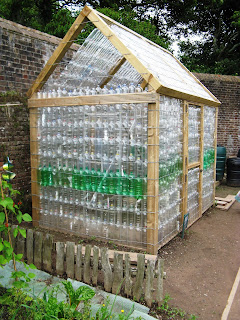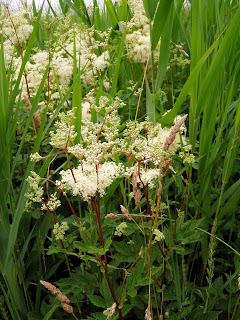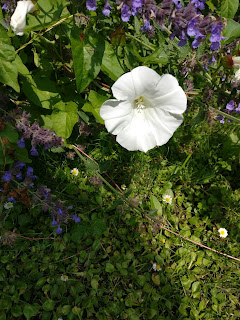Given the post about the enormous world-wide production of plastic bottles, it is heartening to read of a potential use for at least the 1.5 litre variety (https://www.theguardian.com/environment/2017/jun/30/house-tateh-built-sand-filled-recycled-waste-plastic-bottles-western-sahara-). It also reminded me of the UK greenhouse shown above that also uses old water bottles. An engineer called Tateh has utilised sand-filled plastic bottles to construct rounded (wind resistant) houses in a refugee camp in Algeria. The houses are painted white to reflect the Western Saharan heat and the material is reportedly more durable than traditional sun-dried bricks (there are occasional floods as well as the wind erosion). As it takes 6000 bottles to build a house, a rough calculation reveals that the world generates sufficient plastic bottles per minute to construct more than 150 such dwellings in desert locations. These houses could also have an associated greenhouse (also rounded?) and one could also probably produce viable structures in some sea-side locations.
This blog may help people explore some of the 'hidden' issues involved in certain media treatments of environmental and scientific issues. Using personal digital images, it's also intended to emphasise seasonal (and other) changes in natural history of the Swansea (South Wales) area. The material should help participants in field-based modules and people generally interested in the natural world. The views are wholly those of the author.
Friday, 30 June 2017
Have You Got the Bottle?
Given the post about the enormous world-wide production of plastic bottles, it is heartening to read of a potential use for at least the 1.5 litre variety (https://www.theguardian.com/environment/2017/jun/30/house-tateh-built-sand-filled-recycled-waste-plastic-bottles-western-sahara-). It also reminded me of the UK greenhouse shown above that also uses old water bottles. An engineer called Tateh has utilised sand-filled plastic bottles to construct rounded (wind resistant) houses in a refugee camp in Algeria. The houses are painted white to reflect the Western Saharan heat and the material is reportedly more durable than traditional sun-dried bricks (there are occasional floods as well as the wind erosion). As it takes 6000 bottles to build a house, a rough calculation reveals that the world generates sufficient plastic bottles per minute to construct more than 150 such dwellings in desert locations. These houses could also have an associated greenhouse (also rounded?) and one could also probably produce viable structures in some sea-side locations.
To Bee or Not To Bee?
A definitive study carried out extensively in Germany, Hungary and the UK seems to have established that neonicotinoid pesticides seriously damage both Honey bee and wild bee colonies (https://www.theguardian.com/environment/2017/jun/29/pesticides-damage-survival-of-bee-colonies-landmark-study-shows). The pesticides are popular with some farmers, especially being used to coat the seeds of rape, preventing attack by insects (it is not used in the way in Germany allowing comparisons to be made). The trouble is that bees are amongst our most important pollinators and their decline will have detrimental effects on many other crops (especially fruit). Although neonicotinoids are banned on certain crops in the EU, UK farmers have obtained a 'temporary' lifting of the ban in parts of this country. I suspect that there will be moves by 'farming interests' to lift the ban permanently when the UK leaves the EU. The claim that oil seed rape (amongst its many uses) is 'an important source of biodiesel' sounds to me more like a Double Whammy than an argument in favour of using these pesticides!
Thursday, 29 June 2017
Too Elastic on Plastic?
The world appears to have gone plastic bottle crazy, largely driven by a bottled water obsession (https://www.theguardian.com/environment/2017/jun/28/a-million-a minute-worlds-plastic-bottle-binge-as-dangerous-as-climate-change). So many, non-returnable plastic bottles (estimated as a million per minute on a world-wide basis), utilise lots of the oil reserves, are generally difficult to biodegrade and are now filling environments (from the highest mountains to the deepest seas) with rubbish. I am a strong supporter of effective hydration (as high-speed shuffler, I would be) but I cannot believe (as apparently some of my students do) that they are endangering their health in a 45 minute lecture, if they lack a water bottle. Mostly people buy vastly over-priced water when the mains stuff is perfectly good enough. Perhaps a deposit-return system would be helpful?
Wednesday, 28 June 2017
Tuesday, 27 June 2017
Sunday, 25 June 2017
Saturday, 24 June 2017
When the Rivers Run Dry?
The WWF has apparently warned that a quarter of England's rivers are now at serious risk of running dry at some points in the year (https://www.theguardian.com/environment/2017/jun/24/quarter-england-rivers-risk-running-dry-finds-wwf). The effects on river life such as aquatic plants, insects and fish are obvious but such events would also be serious for Water voles, otters and birds (like the Dipper Cinclus cinclus shown above).
Friday, 23 June 2017
Thursday, 22 June 2017
Wednesday, 21 June 2017
Seeing the Changes 1204
At Swansea University Singleton campus, Hedge bindweed (Calystegia sepium); Enchanter's nightshade (Circaea lutetiana) and Monkey flower (Mimulus guttatus) were in bloom. On the beach opposite, Tutsan (Hypericum androsaemum); Lady's bedstraw (Galium verum); the hips of Burnet rose (Rosa pimpinelifolia); Stone bramble (Rubus saxatilis); Sea stock (Matthiola sinuata); Sea bindweed (Calystegia soldanella); Common broomrape (Orobanche minor) and Rest-harrow (Ononis repens) all made appearances.
Tuesday, 20 June 2017
Second Catch
More items from the moth trap in Loughor. A Hebrew character (Orthosia gothica); a Small angle shades (Euplexia lucipara); a Nutmeg (Discestra trifolii); a Brown china-mark (Elophila nymphaeata); a Feathered rancunculus (Polymixis lichenea scilonea); unknown; a Heart and dart (Agrostis exclamationis); a Jubilee fanfoot (Zanchognatha lunalis); a Red carpet (Xanthorhoe decoloraria decoloraria); a Bee moth (Aphomia sociella) and a Hawthorn shield bug (Acanthosoma haemorrhoidalis).
Monday, 19 June 2017
No Flies on Antarctica?
A downside of cruise ship visits to 'pristine' Antarctica, is the rapid introduction of animals and plants to its warming margins (https://www.theguardian.com/world/2017/jun/17/antarctica-insect-plant-invasion-house-flies-mosses-warmer-climate). Of immediate concern are the thriving mosses that are providing habitats for rocketing House flies numbers. Of course, we are also likely to find other tough 'carpetbaggers' (e.g. rats and cockroaches) travelling with the tourists. A very real concern is that it is difficult to predict what effects these organisms will have on the animal populations of Antarctica that attract people to visit in the first place.
Subscribe to:
Comments (Atom)
-
I n the UK and US, a pparently popular and successful vegan/vegetarian restaurants are reportedly closing or adding meat to their menus ( ...
-
Early ripening fruit may seem convenient but some folk think it confirms environmental stress. There's also a possibility th...



















































%20mating%20NWCW.jpg)

